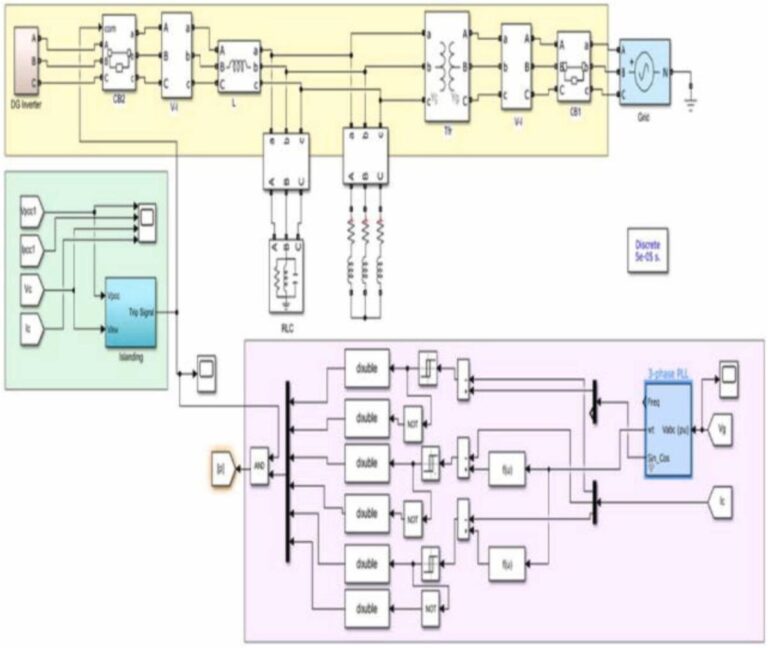Researchers in India have proposed a new set of techniques to reduce total harmonic distortions during islanding, which occur in distributed generation systems when there are disturbances in the power grid. Compared to conventional approaches, it reportedly achieves faster detection times by using real-time data analysis and dynamically adapting to changing grid conditions.
Researchers from GLA University in India have developed a series of harmonic mitigation techniques for island conditions.
“The novelty of this work lies in the unique combination of passive and active sensing strategies, optimized by adaptive control mechanisms that increase both reliability and scalability,” said the study’s lead author, Sanchari Deb. pv magazine. “This approach represents a significant advance over existing methods, which favor accuracy or scalability, but rarely both. The proposed method is preferred for its ability to provide high detection accuracy with minimal notice to deviate from zero (NDZs) while maintaining system stability and power quality, making it an ideal choice for future PV deployments systems.”
Islanding occurs in distributed generation systems when there are disruptions in the electrical grid. Under these conditions, PV systems continue to inject supplying power to the electricity grid, with negative consequences for power quality and the risk of possible damage to electrical equipment.
“Understanding the complexity of islanding events is paramount for devising effective solutions that ensure the seamless integration of PV systems without compromising the performance of the electricity grid,” the scientists said. “During islanding situations in grid-connected PV systems, the presence of harmonics can exacerbate power quality problems, affecting both the grid and the connected loads.”
In the newspaper “A new technique to detect and suppress harmonics during island operation in a grid-connected PV system”, published in Energy reportsthe research group investigated the most important factors that lead to island formation: fluctuations in the electricity grid, the behavior of inverters and system impedance. Their analysis aimed to analyze the specific harmonic frequencies generated by PV systems during islanding situations and to identify critical system parameters.
The proposed set of techniques, which the scientists describe as a combination of passive and active sensing strategies, includes control algorithms and filter designs, as well as modulation strategies to suppress harmonics during island operation. It also integrates advanced signal processing with adaptive control mechanisms. Compared to conventional approaches, it reportedly achieves faster detection times by using real-time data analysis and dynamically adapting to changing grid conditions.
Image: GLA University, Energy Reports, Common License CC BY 4.0
“Unlike existing methods, this technique is designed with scalability in mind,” the academics said. “The decentralized control structure enables seamless integration into large-scale PV networks, while the adaptive algorithms ensure the system can adapt to changing grid conditions in real time.”
The researchers also presented theoretical principles behind island detection and focused in particular on two island detection techniques, such as the Slip Mode Frequency Shift (SMS) and Phase Jump Detection (PJD). They also offered a new approach to analyze how impedance mismatches can affect harmonic suppression during islanding.
The proposed method was validated under PV system sizes ranging from 5 kW to 100 MW and was found to achieve an overall harmonic distortion (THD) reduction of approximately 3%, compared to 4.5% for existing hybrid methods.
“This reduction is consistent with IEEE 519 standards, allowing the system to better comply with grid regulations while maintaining higher power quality,” the scientists pointed out. “The proposed method consistently maintained an average error rate of less than 2% in detection accuracy, compared to an error of 5-7% with traditional methods.”
The team said that selecting the right detection thresholds and response times for different grid conditions was crucial to their work. “By optimizing these parameters it is possible to balance the trade-off between detection speed and system stability, ensuring reliable protection against islanding in a wide range of operating scenarios,” they concluded.
This content is copyrighted and may not be reused. If you would like to collaborate with us and reuse some of our content, please contact: editors@pv-magazine.com.
Popular content



